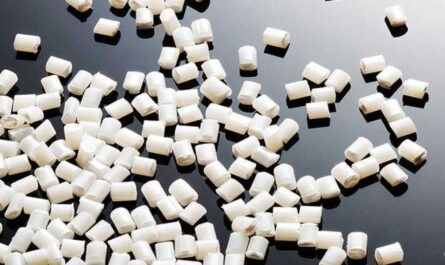Wet chemicals play a vital role in the semiconductor and electronics manufacturing industry. From wafer cleaning to film deposition and etching, various wet chemical processes are used at different stages of semiconductor device fabrication. With constant demand for miniaturization and higher precision, wet chemical processes are becoming more complex to meet stringent quality requirements. This article discusses some key aspects of wet chemicals used in electronics and semiconductor applications.
Wafer Cleaning
Wafer cleaning is one of the most critical initial steps in the manufacturing process. It involves removal of particles and other unwanted contaminants from wafer surfaces using various wet chemical formulations. Commonly used wafer cleaning chemicals include sulfuric acid (H2SO4), hydrochloric acid (HCl), hydrogen peroxide (H2O2), hydrofluoric acid (HF) etc. These chemicals are generally used in combinations along with deionized water in specialized cleaning equipment. For example, a standard RCA clean uses mixtures of ammonium hydroxide, hydrogen peroxide and water for organic residue removal followed by hydrochloric acid and hydrogen peroxide for removing inorganic/metallic contaminants. Advances wafer materials like compound semiconductors require customized cleaning chemistries compatible with their unique properties. Failure to achieve requisite cleanliness levels can negatively impact yield and device performance. Improper handling of hazardous chemicals also poses risks to human and environment safety.
Photo Resists
Photolithography is a primary patterning technique used in semiconductor fabrication. It utilizes light-sensitive chemical formulations called photo resists which are applied as thin films to wafer surfaces. Upon exposure to UV light through photo masks, exposed areas of photo resist chemically change their solubility. Commonly used positive resists become soluble while negative resists become insoluble on exposure. Developers are then used to selectively remove either the exposed (positive) or unexposed (negative) areas of photo resist and define patterns on wafers. Novolac andpolyhydroxystyrene(PHS) basedphoto resists find widespread adoption for patterning tasks like etching and ion implantation. Advancements have led to chemically amplified resists with improved sensitivity and resolution for achieving smaller feature sizes in modern devices. Proper characterization of photo resist performance under various process conditions helps ensure yield and reliability.
Thin Film Deposition
Precise layering of various thin films is crucial for multi-layered semiconductor device architectures. Wet chemical deposition techniques play a vital role in this area. Commonly used methods include Chemical Vapor Deposition (CVD), Metal Organic Wet Chemicals for Electronics and Semiconductor Vapor Deposition (MOCVD) and Atomic Layer Deposition (ALD). In CVD, wet precursors like silane (SiH4), ammonia (NH3) are thermally decomposed to deposit thin films of materials like silicon, silicon nitride etc. MOCVD uses organometallic compounds like trimethylgallium, trimethylaluminum for epitaxial growth of compound films. ALD alternately pulses reactants in a self-limiting surface reaction process to achieve layer-by-layer deposition of ultra-thin and conformal films with angstrom level thickness control. Proper selection and control of precursor chemistry is crucial for obtaining films with required composition, properties and uniformity.
Etching
Precise removal of films is another critical processing step handled majorly by wet chemical etching techniques. Commonly used wet etchants include hydrofluoric acid for silicon dioxide etching, phosphoric acid mixtures for silicon/polysilicon etching and various acid/alkaline mixtures for compound semiconductor etching. Isotropic or anisotropic etch profiles can be obtained depending on crystalline orientation and etchant formulation/conditions. Photolithography defined etch masks are used for selective removal of exposed areas. Advances include development of etch-stop layers, self-aligned silicidation techniques using etch-profile controlled selective etching. Improving etch selectivity and controlling microloading effects during deep etching of high aspect ratio structures continues to remain a challenge. Proper etchant disposal as per environmental guidelines is also important considering their hazards.
CMP and Surface Planarization
With shrinking device dimensions, maintaining global planar topography has become crucial. Chemical mechanical planarization (CMP) is a widely used surface polishing technique addressing this need. In CMP, slurry consisting of oxidizing and abrasive chemicals is used along with a polishing pad to planarize surfaces through chemical and mechanical action. Silica (SiO2) and ceria (CeO2) based slurries are commonly used for removing excess copper, low-k dielectrics and other materials. Additives are tailored to obtain desired removal rates and material selectivity. End-point detection and within wafer non-uniformity control continue to be active research areas. Precise chemical formulation and slurry delivery are needed to avoid surface/subsurface damage during high removal rate CMP processes integral to device scaling.
Testing and Analysis
Advances in semiconductor manufacturing demand advancements in wet chemical based testing and analysis techniques as well. Chemical solutions find wide use in metrology and defect inspection applications. Photochemical etching/staining techniques using solutions of Chlorine Trifluoride, Ammonium hydroxide etc. are employed for defect visualization. Wet etching based defect review helps identify issues for corrective action. Trace metal and particle contamination monitoring is done using chemical digestion followed by elemental analysis techniques like ICP-MS. Wet process performance and yields are monitored through selective film dissolution in appropriate solvents and microscopic/spectroscopic analysis of properties. Reliable testing methodologies help optimize processes through defect reduction and feedback iterations.



